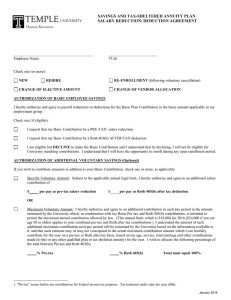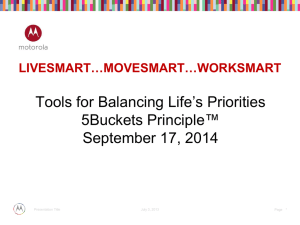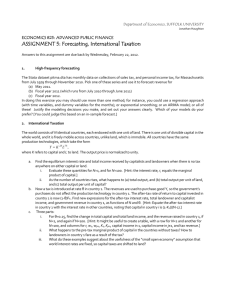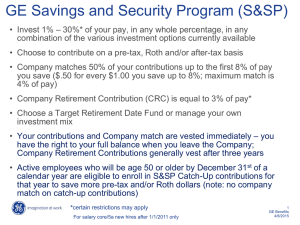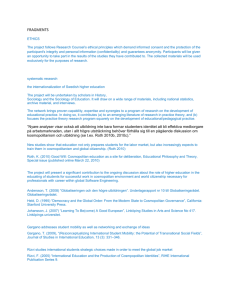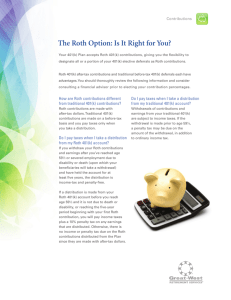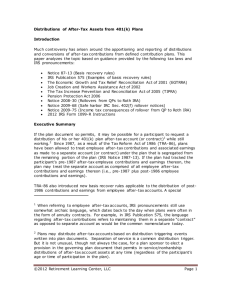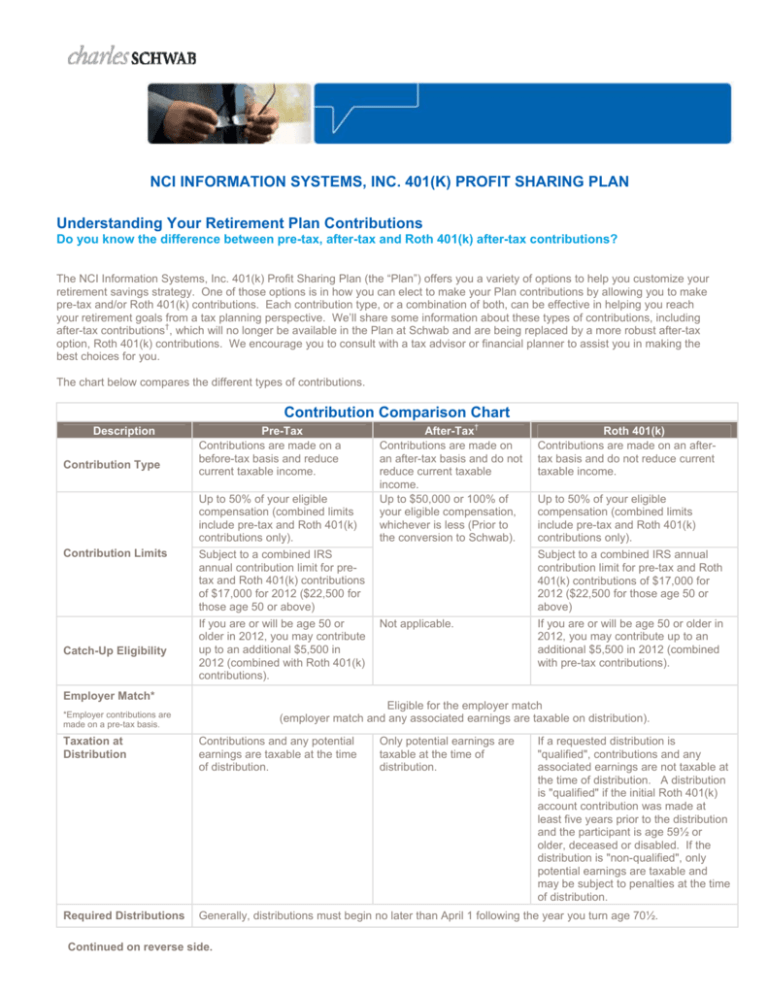
NCI INFORMATION SYSTEMS, INC. 401(K) PROFIT SHARING PLAN
Understanding Your Retirement Plan Contributions
Do you know the difference between pre-tax, after-tax and Roth 401(k) after-tax contributions?
The NCI Information Systems, Inc. 401(k) Profit Sharing Plan (the “Plan”) offers you a variety of options to help you customize your
retirement savings strategy. One of those options is in how you can elect to make your Plan contributions by allowing you to make
pre-tax and/or Roth 401(k) contributions. Each contribution type, or a combination of both, can be effective in helping you reach
your retirement goals from a tax planning perspective. We’ll share some information about these types of contributions, including
†
after-tax contributions , which will no longer be available in the Plan at Schwab and are being replaced by a more robust after-tax
option, Roth 401(k) contributions. We encourage you to consult with a tax advisor or financial planner to assist you in making the
best choices for you.
The chart below compares the different types of contributions.
Contribution Comparison Chart
Description
Contribution Type
Pre-Tax
Contributions are made on a
before-tax basis and reduce
current taxable income.
Up to 50% of your eligible
compensation (combined limits
include pre-tax and Roth 401(k)
contributions only).
Contribution Limits
Catch-Up Eligibility
After-Tax†
Contributions are made on
an after-tax basis and do not
reduce current taxable
income.
Up to $50,000 or 100% of
your eligible compensation,
whichever is less (Prior to
the conversion to Schwab).
Subject to a combined IRS
annual contribution limit for pretax and Roth 401(k) contributions
of $17,000 for 2012 ($22,500 for
those age 50 or above)
If you are or will be age 50 or
older in 2012, you may contribute
up to an additional $5,500 in
2012 (combined with Roth 401(k)
contributions).
Employer Match*
Roth 401(k)
Contributions are made on an aftertax basis and do not reduce current
taxable income.
Up to 50% of your eligible
compensation (combined limits
include pre-tax and Roth 401(k)
contributions only).
Subject to a combined IRS annual
contribution limit for pre-tax and Roth
401(k) contributions of $17,000 for
2012 ($22,500 for those age 50 or
above)
Not applicable.
If you are or will be age 50 or older in
2012, you may contribute up to an
additional $5,500 in 2012 (combined
with pre-tax contributions).
Eligible for the employer match
(employer match and any associated earnings are taxable on distribution).
*Employer contributions are
made on a pre-tax basis.
Taxation at
Distribution
Contributions and any potential
earnings are taxable at the time
of distribution.
Required Distributions
Generally, distributions must begin no later than April 1 following the year you turn age 70½.
Continued on reverse side.
Only potential earnings are
taxable at the time of
distribution.
If a requested distribution is
"qualified", contributions and any
associated earnings are not taxable at
the time of distribution. A distribution
is "qualified" if the initial Roth 401(k)
account contribution was made at
least five years prior to the distribution
and the participant is age 59½ or
older, deceased or disabled. If the
distribution is "non-qualified", only
potential earnings are taxable and
may be subject to penalties at the time
of distribution.
What is the difference between after-tax contributions which had been available in the Plan and Roth 401(k)
contributions?
Roth 401(k) contributions and after-tax contributions are similar in tax treatment initially and during the years before retirement.
Both Roth 401(k) and after-tax contributions are subject to federal, state and Social Security tax before it is contributed, and they
both can grow tax-deferred until distribution.
Roth 401(k) and after-tax contributions differ with regard to tax treatment at the time of distribution. Withdrawals of your after-tax
contributions will have taxes due if you experienced any earnings. If qualified as noted above, a distribution of contributions and
any earnings from a Roth 401(K) will not be subject to federal and, in most cases, state tax.
Another difference between Roth and after-tax is the liquidity of these contributions. After-tax contributions are not subject to the
same distribution restrictions as Roth 401(k) elective deferrals. Roth 401(k) contributions are only available at death, disability,
separation of service, attainment of age 59½ or hardship.
Whether you choose to make pre-tax or Roth 401(k) contributions - or a combination of them - participating in the Plan and saving
for your retirement can be the key in reaching your retirement goals.
Questions?
Contact a Schwab Participant Services Representative at 800-724-7526 or log onto www.nci.schwabplan.com
to review all of the information communicated to you up to this point regarding the transition.
†
The after-tax contribution option is being frozen to future contributions in the Plan at Schwab.
* The employer contribution is paid on a pre-tax basis and may be taxable at withdrawal.
This information is not intended to be a substitute for specific individualized tax, legal or investment planning advice. Where specific advice is
necessary or appropriate, Schwab recommends consultation with a qualified tax advisor, CPA, Financial Planner or Investment Manager.
Schwab Retirement Plan Services, Inc. provides recordkeeping and related services with respect to retirement plans.
© 2012 Schwab Retirement Plan Services, Inc. All rights reserved. (0812-5333) PLC69266NIS-00 (08/12)

